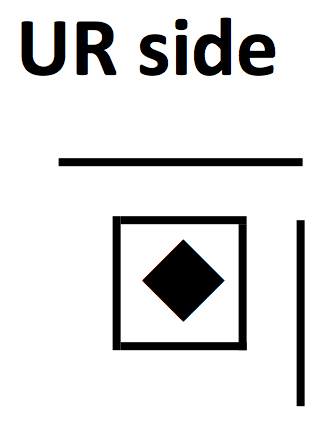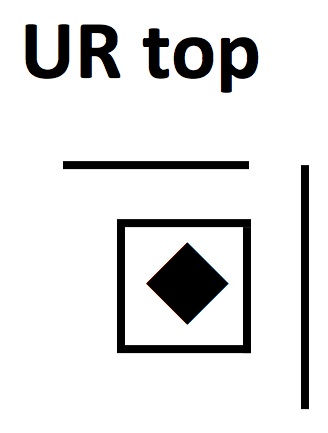Plating Wizard Explained:
The Plating Wizard is an online form you use to tell a searchable database what stamp characteristics you want to see. The database contains all 2,600 stamps by position, with traditional plating characteristics, images and much more. The goal of the Plating Wizard is to scale down your "matching results" to a small number of stamps - hopefully less than 25. The Plating Wizard rules are very simple:
- You can "click on" any combination of choices for any group. Groups from which to Select include Plates, Reliefs, Guide Dots, Primary Inner Lines, and Other Plating Characteristics.
- You can make your choices in any order.
- If you completely skip entire groups; you will only end up with more stamps to consider.
- When you have made the choices you think will help you plate your stamp, hit the “Find the Stamps with these Characteristics” button and see what shows up. The "Filtering" of results occurs in the following order:
- For any number of Plates that are chosen, the results are filtered by the chosen Plates. If no Plates are chosen, then no Plates are filtered and all Plates are available for the next stage;
- With the Plates chosen in step 1, for any number of Reliefs that are chosen, the results are filtered by the chosen Reliefs. If no Reliefs are chosen, then no Reliefs are filtered and all Reliefs are available for the next stage;
- With the Plates and Reliefs chosen in steps 1 and 2, if any number of Guide Dots are chosen, the results are filtered by the chosen Guide Dots. If no Guide Dots are chosen, then no Guide Dots are filtered and all Guide Dots are available for the next stage;
- With the Plates, Reliefs, and Guide Dots chosen in steps 1 to 3, if any number of Primary Inner Lines are chosen, the results are filtered by the chosen Primary Inner Lines. If no Primary Inner Lines are chosen, then no Primary Inner Lines are filtered and all Primary Inner Lines are available for the next stage;
- With the Plates, Reliefs, Guide Dots, and Primary Inner Lines chosen in steps 1 to 4, if any number of Other Plating Characteristics (such as the 32 other recuts listed, transfer shifts, and multiple guide dots) are chosen, the results are filtered by the chosen Other Plating Characteristics. If no Other Plating Characteristics are chosen, then no Other Plating Characteristics are filtered and all Other Plating Characteristics are shown in the final results.
- Therefore, if you decided not to do any filtering at all, and hit the “Find the Stamps with these Characteristics” button, you would show results for all 2,600 stamps!
Shorthand Used in the Selection Buttons:
Shorthand keeps the Plating Wizard form concise and standardized. The following conventions are used throughout the Plating Wizard:
The Plating Wizard hopes to make plating easier. Traditional plating characteristics include Plate #, Relief, Guide Dots, Primary Inner Lines, Recuts, Shift & Transfers, etc. as discussed throughout Dr. Chase’s book, subsequent USPCS Chronicle articles and this study.
Looking beyond those traditional plating characteristics, by the end of 2019, it is planned to incorporate the thousands of elements of "Additional Plating Characteristics" which are present in the wonderful DeVere Card Plating Charts. Please refere to the DeVere Charts section of this study for more information. However, at this time the Plating Wizard includes only the Traditional Plating Characteristics in an interactive tool designed to help you plate stamps.
Plating Wizard Form
Selections within any group (groups include Select Plates, Select Reliefs, Select Guide Dots, Select Primary Inner Lines, and, Select Other Plating Characteristics) limit the stamps to those choices. If you make no choices within a group then that group is not filtered and the Plating Wizard shows more stamps in its results. So, either select all the choices within a group that your think could match your stamp, or don't select any within the group. You are encouraged to "mix and match" your selections among the various groups.
Select Plates:
Scott #10 or #10A:
Scott #10A:
Scott #11:
Scott #11A:
Select Reliefs:
Select Guide Dots:
Select Primary Inner Lines:
Select Other Plating Characteristics:
Secondary Inner Lines or Frame Line Recuts:
Inner Lines Running Up/Down:
Triangle Recuts:
Diamond Block recuts:
Label recuts:
Other characteristics noted in Chase Book:
Frame Lines are Open or Extended at Corners:




















